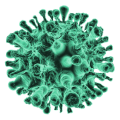Crack: Understanding Its Impacts, Risks, and Path to Recovery
Introduction
Crack cocaine, often simply called “crack,” is a powerful and highly addictive stimulant that wreaks havoc on individuals and communities. Understanding the profound impact of cocaine is crucial for addressing the public health crisis it presents. This article delves into the nature of cocaine, its effects, and the pathways to recovery.
What is Crack Cocaine?
Crack cocaine is a form of cocaine that has been processed to create a rock crystal, which is then heated and smoked. It is known for its rapid and intense effects, which make it highly addictive. Originating in the 1980s, quickly spread through urban areas, leading to significant social and health issues.
How Crack Cocaine Works
When smoked, cocaine quickly reaches the brain, causing a surge of dopamine—a neurotransmitter associated with pleasure and reward. This surge leads to intense euphoria but is short-lived, often lasting only 5 to 10 minutes. The brain’s reward system is hijacked, creating a powerful desire to use the drug again and again.
The Appeal of Crack Cocaine
Crack cocaine’s appeal lies in its potent high and its affordability compared to powdered cocaine. Users often seek it out for its euphoric effects, increased energy, and heightened alertness. Demographically, it has disproportionately affected marginalized communities, exacerbating existing social inequalities.
Short-Term Effects of Crack Use
The immediate effects of cocaine include increased heart rate, elevated blood pressure, and a burst of energy. Psychologically, users experience intense euphoria, heightened confidence, and increased sociability. However, these effects are fleeting, leading to frequent and repeated use.
Long-Term Effects of Crack Cocaine
Chronic use of crack cocaine results in severe health complications. Long-term users often suffer from cardiovascular issues, respiratory problems, and neurological damage. Mentally, prolonged use can lead to anxiety, paranoia, hallucinations, and severe depression.
Addiction and Dependency
Crack cocaine is notorious for its high potential for addiction. Dependency can develop rapidly as users chase the intense, albeit short-lived, high. Signs of addiction include compulsive drug-seeking behavior, neglect of responsibilities, and a marked increase in tolerance.
Social and Economic Consequences
The repercussions of addiction extend beyond the individual to affect families and communities. Personal relationships often deteriorate, and users may face financial ruin due to the high cost of sustaining their addiction. Economically, communities suffer as addiction leads to increased healthcare costs and reduced productivity.
Crack Cocaine and Crime
There is a well-documented link between crack use and criminal activity. Users may engage in illegal activities to finance their addiction, and the distribution of cocaine often leads to violent crime. Legal consequences for possession or distribution can include lengthy prison sentences, further complicating the user’s life.
Health Risks Associated with Crack Use
Crack cocaine poses numerous health risks. It can cause severe cardiovascular issues such as heart attacks and strokes. Respiratory problems are common due to the method of ingestion, leading to chronic cough, lung damage, and respiratory infections. Other health complications include severe weight loss, dental issues, and increased susceptibility to infectious diseases.
Treatment Options for Crack Addiction
Recovery from addiction typically begins with detoxification, where the body is cleared of the drug under medical supervision. This is often followed by inpatient or outpatient rehabilitation programs that provide structured support and therapy.
Therapies for Crack Addiction
Behavioral therapies are a cornerstone of addiction treatment. Cognitive-behavioral therapy (CBT) helps users understand the thoughts and behaviors that contribute to their addiction. Additionally, medications may be prescribed to manage withdrawal symptoms and reduce cravings, although no specific medication for crack addiction exists.
Support Systems and Recovery
Support groups, such as Narcotics Anonymous (NA), play a vital role in recovery. These groups provide a community of individuals who understand the challenges of addiction. Family and community support are also critical, offering emotional and practical help throughout the recovery process.
Preventive Measures
Preventing cocaine use requires comprehensive education and awareness programs. Schools, communities, and media campaigns can play significant roles in informing the public about the dangers of cocaine. Community initiatives aimed at providing alternatives to drug use and supporting at-risk individuals are also crucial.
Conclusion
Crack cocaine remains a significant public health issue due to its highly addictive nature and the severe health, social, and economic consequences associated with its use. However, with effective treatment, support, and preventive measures, individuals and communities can overcome the challenges posed by crack addiction. Encouraging those affected to seek help is essential in the fight against this pervasive drug.






